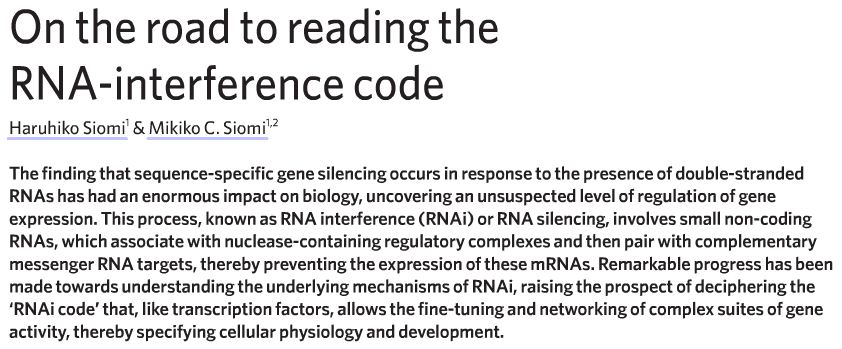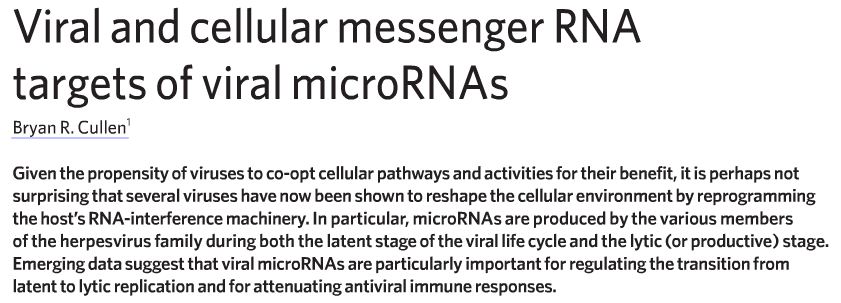Welcome to week 2 of “What I’m Reading Wednesday” (WIRWed)!
I’ve noticed in these first couple of months of my post doc fellowship that my readings tend to take on a topical nature. One week, I’m reading about inflammasomes. The next week, I’m reading about interferon lambda. This week, my focus is turned to microRNAs. I missed some of the hype while suffering from tunnel vision during my graduate student days, so I’m doing some catch up with some reviews and then a great paper looking as small viral RNA (svRNA) produced during influenza infection.
First, a bit light reading, a news feature from 2007 on researchers building their case for RNAi causing increased gene expression instead of the negative regulation associated with small RNAs. Hmm, worth following up on to see if they were able to elucidate a mechanism.
Ok, now for the real reviews:
Focus on biogenesis of small RNAs, from generation of the guide strand to complex formation.
miRNAs specifically encoded by viruses, with particular attention to Herpesviruses, and their targets.
Now that we are all caught up to speed and are experts on miRNAs (ha!), here are some interesting articles I found involving miRNAs and influenza.
This was a fascinating article! The authors set out to determine if small viral RNAs (svRNA), similar in length to miRNA but not necessarily derived in the same manner, could help explain the mechanistic switch from production of viral mRNA to genomic vRNA. Accumulation of svRNA coincided temporally with this switch, and treatment with complementary sequences to the svRNA demonstrated decreased genomic vRNA production and decreased virion progeny. This opens up a possibility for broad spectrum anti-viral therapeutics that would be specific to influenza (or another virus). Great work!
OK, that’s it for me today. What are your thoughts? I’d love to hear what you think about this last paper, using anti-svRNA as a therapeutic. Currently, these types of treatments are being evaulated for as cancer therapeutics and against chronic viral infections (i.e. HCV). Could it be done for an acute infection?





You must be logged in to post a comment.